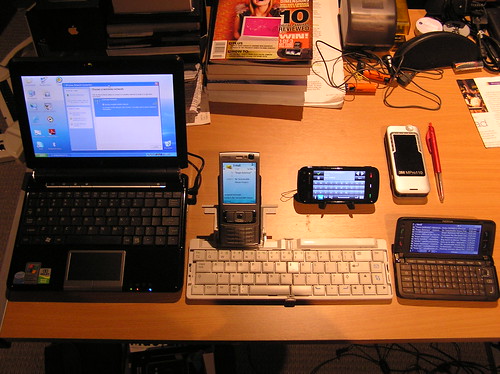The 2009 Report identifies Mobile Devices as an emerging technology with time-to-adoption of one to two years.
■ Mobiles. Already considered as another component of the network on many campuses, mobiles continue to evolve rapidly. New interfaces, the ability to run third-party applications, and location-awareness have all come to the mobile device in the past year, making it an ever more versatile tool that can be easily adapted to a host of tasks for learning, productivity, and social networking. For many users, broadband mobile devices like the iPhone have already begun to assume many tasks that were once the exclusive province of portable computers.
Identified emerging technologies in education include (in order ofadoption timeframe)
- Mobiles
- Cloud Computing
- Geo-Everything
- The Personal Web
- Semantic-Aware Applications
- Smart Objects
http://www.nmc.org/news/nmc/2009-horizon-report-released
http://www.nmc.org/pdf/2009-Horizon-Report.pdf







